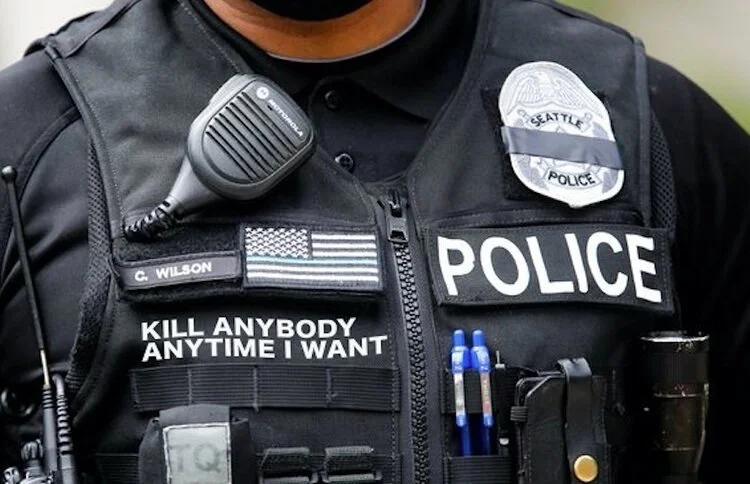Seattle Police Killed More People while Under Federal Oversight, according to data analysis of Cops in white, liberal city
/From [HERE] A data scientist says she’s found evidence that Seattle police killings have worsened since the federal government began monitoring the department a decade ago, an analysis that was criticized by a federal monitor just before a critical decision on the future of that oversight.
Sherry Towers, a data scientist who studies violence and extremism, says she wasn’t initially looking into Seattle police violence in particular when she came across the data.
But what she found alarmed her enough to send her findings to U.S. District Judge James Robart before a May 30 hearing that could result in the end of most federal oversight through the city’s decade-old consent decree.
Antonio Oftelie, who was appointed by Robart to monitor the Seattle Police Department’s compliance with the consent decree, said he welcomed input from community members, but he criticized key aspects of Towers’ analysis as “misleading” in a memo sent to the court.
At issue is a difference of opinion between consent decree stakeholders and Towers about how much police use of force is too much — and whether the city has done enough to leave federal oversight behind.
Towers, who is known for her 2015 study looking at the contagion effect of mass shootings, stands by the letter she sent to Robart on May 20, which claimed that Seattle’s rate of police shootings is significantly higher than elsewhere in the country. She started looking at national police killings data as part of a Department of Homeland Security-funded project, and she mentioned to a colleague following the progress of the consent decree that King County’s rate seemed higher than average.
Towers then used public data from Seattle police, the Centers for Disease Control and Prevention and the FBI, as well as The Washington Post’s police shooting database, to conclude that about 1 in 10 people who have died by homicide in Seattle between 2013 and 2019 have been killed by a police officer.
“I could have just looked at the data and seen everything had gotten better, and that also would’ve warranted an email to the judge to say, just FYI, I’m a data analyst with experience in looking at crime data, and the data that I look at supports what the Seattle PD is saying,” Towers said. “But that’s not what I found.”
In his memo responding to Towers’ email, Oftelie said Towers’ analysis could not explain whether the shootings were justified. The vast majority of force assessed by the monitor found that it complied with the consent decree, he wrote.
When asked for comment, the police department referred The Seattle Times to the federal monitor’s memo, and said that it had made improvements in data transparency as a result of the consent decree.
In March, city of Seattle and Department of Justice lawyers asked Robart to find the Police Department in “substantial compliance” with the consent decree, established in 2012 after investigators found evidence of biased policing and that the department regularly used excessive force.
The city cited the federal monitor’s report showing a 60% decrease in use of the most serious types of force — including shootings — between 2014 and 2021.
Towers, however, said that fatal police shootings specifically have increased since the consent decree was established, and that racial disparities have gotten worse. She found that in the seven years before the 2012 settlement, Seattle police fatally shot 12 people, but between 2013 and 2019, officers killed 21 people. (The most recent year of SPD’s shootings-specific database available to the public is 2019.) Over the same time period, she also found that the percentage of fatal shootings of nonwhite people increased.
The American Civil Liberties Union of Washington filed a brief in the consent decree case making similar arguments about continued racial disparities in policing. The organization cited SPD’s 2019 use of force report that showed force was used on people of color more than 50% of the time, despite the city being 65% white.
Oftelie said in a Thursday interview he agrees racial disparities remained “an area of challenge that the city must continuously address.” He said he believes Seattle is now at the forefront of trying to figure out the root causes of those disparities — and is tracking data on them, unlike many police departments.
Oftelie also said it was important not to overlook a reduction in more common, lower-level types of force, which he sees as a good indicator of a change in Seattle police culture. That kind of force decreased by 48% from 2015 to 2021, though it spiked in 2018.
“Historically throughout the country, lower levels of force have been used to intimidate people, to make them not feel comfortable in certain communities, to send a signal from police to community,” Oftelie said.
“And so if you can reduce type one force as dramatically as Seattle has, that shows a real difference in culture, in policing, a difference in mindset in policing, because cops on the street with type one force, there’s deliberation there.”
Yet the federal monitor did not address Towers’ main point — that the share of police killings out of overall homicides in Seattle is worse compared with much of the rest of the country, and more than double the national average. Making comparisons to other jurisdictions was out of his purview, Oftelie said, and homicides aren’t a good proxy for how often situations involving a police shooting might occur.
The Seattle Times contacted five academics who study police violence, and all had different preferred methods for measuring it. Two said that Seattle’s rate of police violence compared with other cities nationwide is elevated, and another said this is true of police agencies across the West.
“The raw numbers indicate Seattle has a kind of high police homicide rate and could do better,” said Dan O’Flaherty, professor of urban economics at Columbia University.






































































































































































































































































